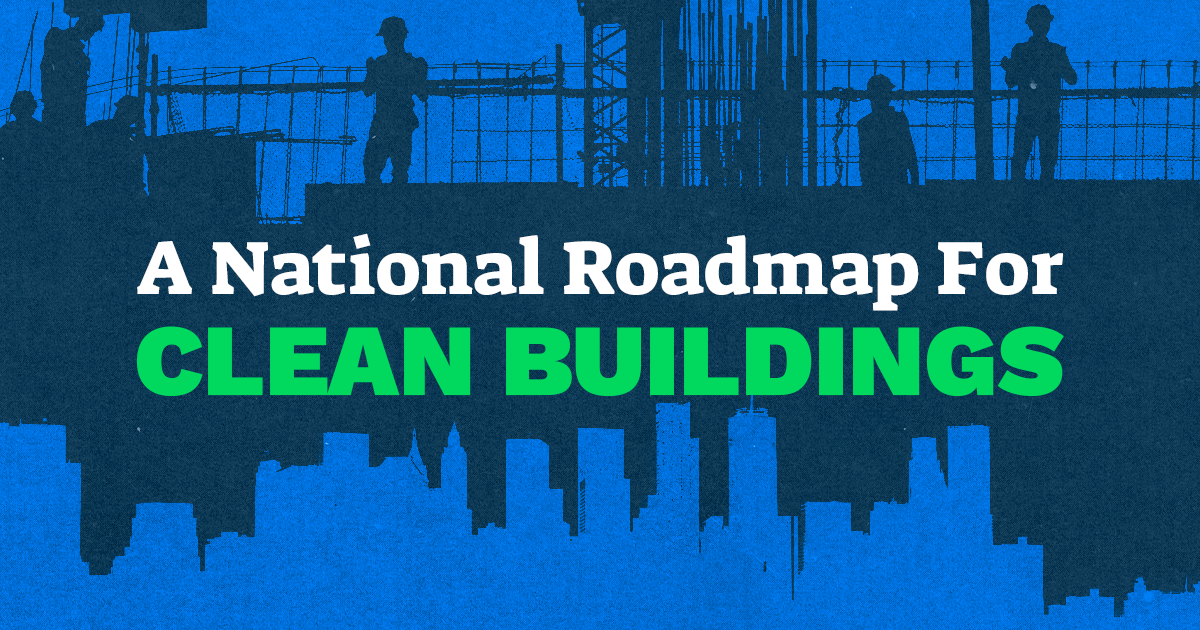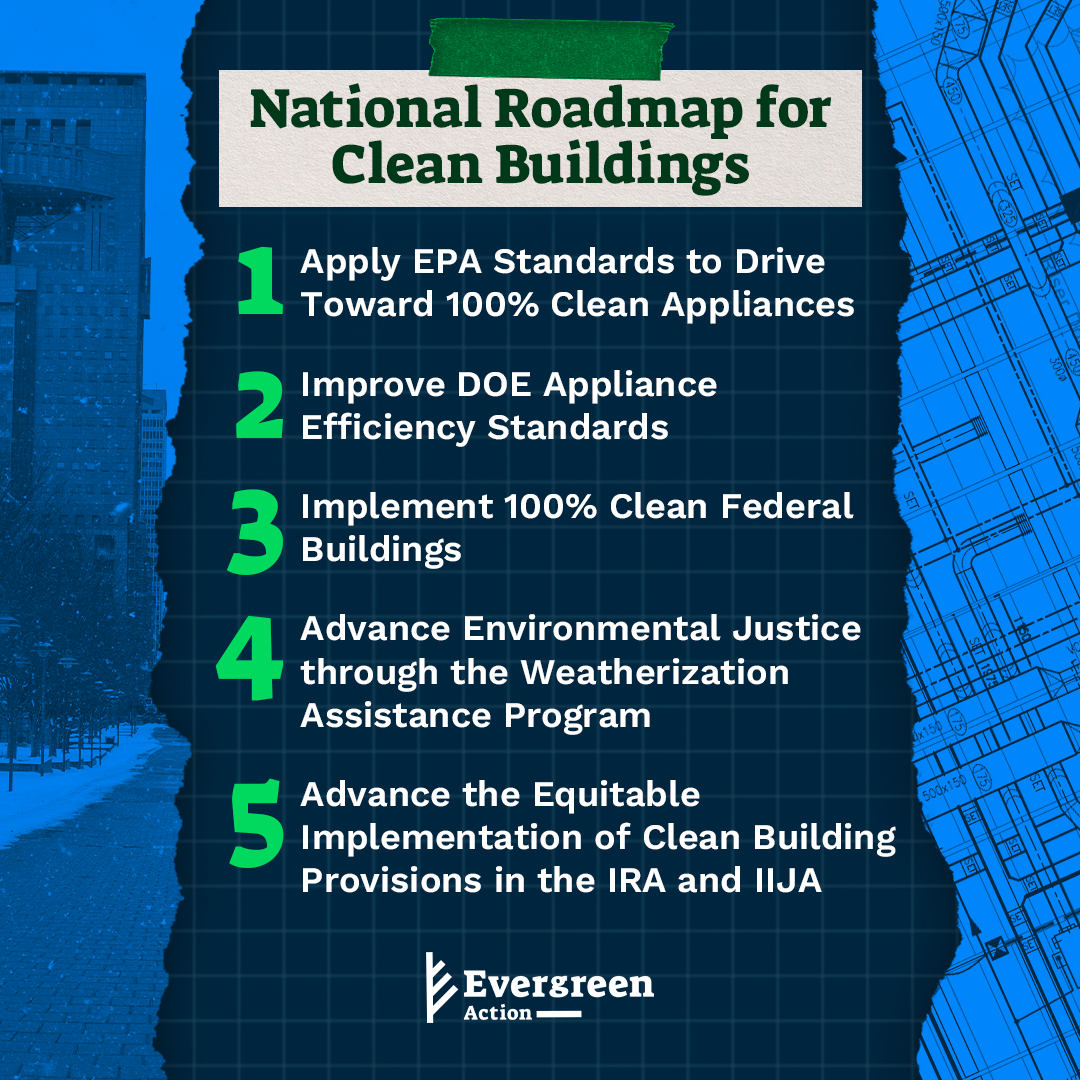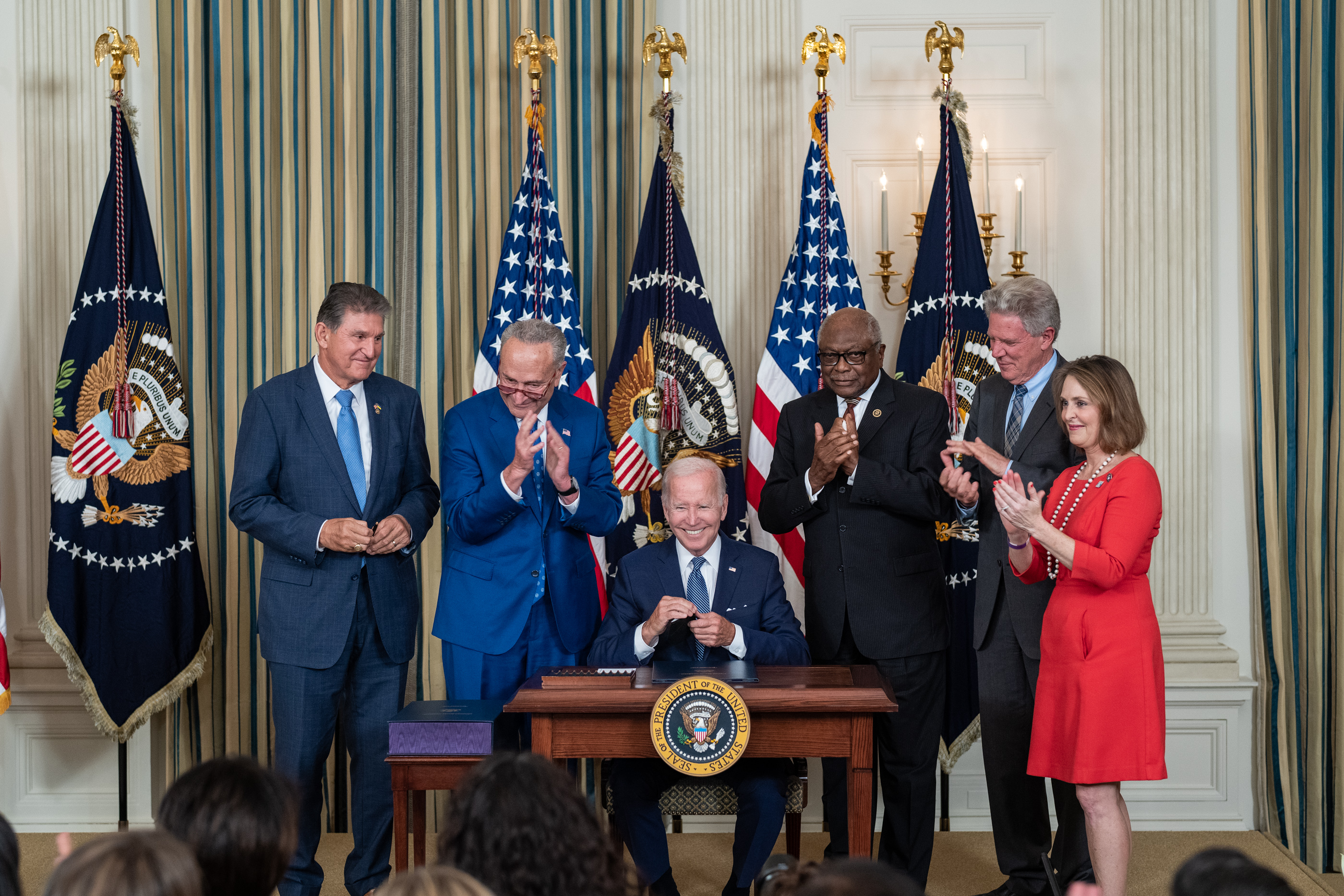We stand at a pivotal moment. The Inflation Reduction Act made historic investments in decarbonizing America’s built environment, but President Biden must go further. In our new report, A National Roadmap for Clean Buildings, Evergreen Action lays out a roadmap for how President Biden can use executive action to close the gap on air pollution in the buildings sector. We recommend a set of ambitious standards to complement new investments, establishing firm timelines for improving public health outcomes and cutting carbon and other harmful pollution in communities across the country.
Eliminating air pollution from the built environment will be critical for the clean energy transition. Seventy million homes and businesses currently burn fossil fuels for heating, cooking, and other needs. Direct emissions from fossil-fueled air and water heating and cooking appliances alone account for 13 percent of national carbon pollution. Beyond climate warming impacts, this pollution has major implications for public health: the nation’s fossil fuel appliances emit more nitrogen oxides (NOx) than all of America’s fossil gas power plants combined. NOx contributes to the formation of local smog and fine particulate matter, causing billions of dollars of public health impacts across America and thousands of premature deaths each year; residential and commercial emissions are now the leading cause of cross-state early deaths from air pollution.
The Inflation Reduction Act (IRA) contains more than a dozen provisions to tackle this pollution, including rebates for electric appliances and tax credits for net-zero ready homes. But analysts indicate that further policymaking focused on pollution mitigation will be necessary. That’s where executive action comes in. President Biden must pursue a five-point strategy, laid out here, to implement rigorous pollution standards and achieve full decarbonization of America’s built environment.




